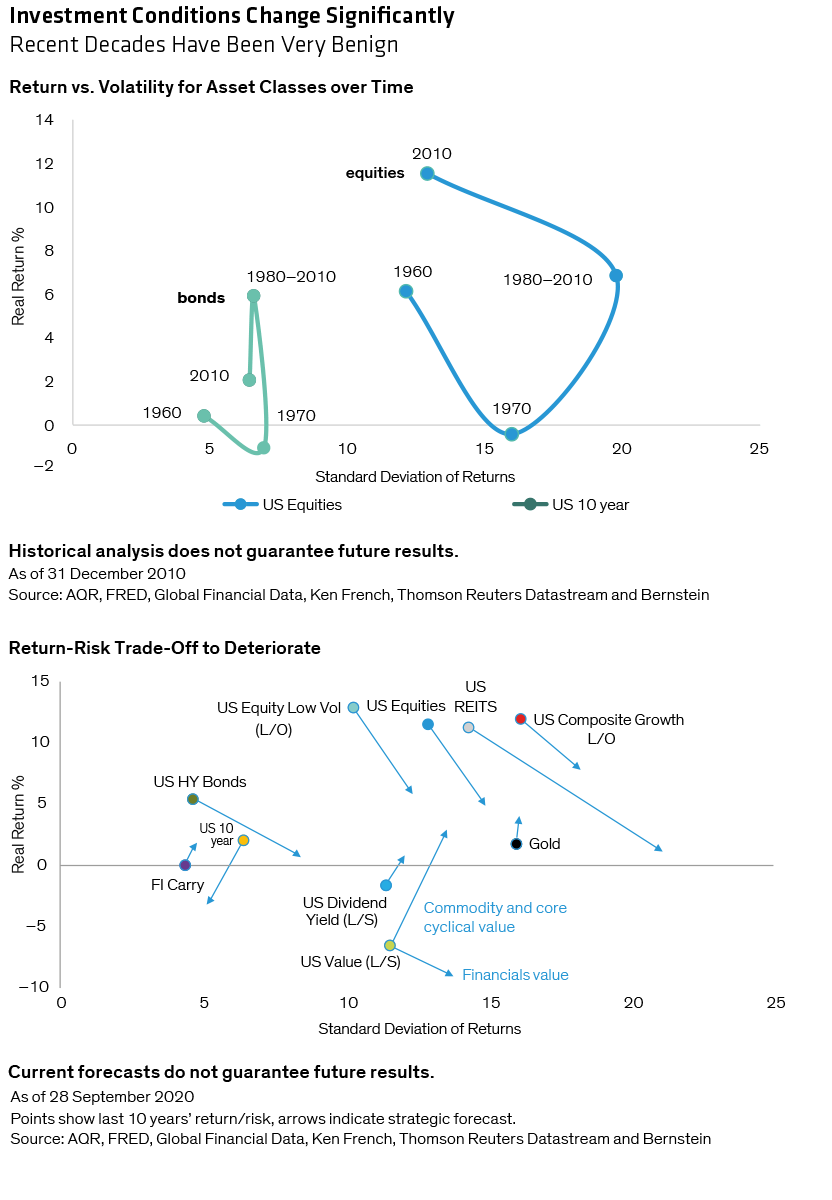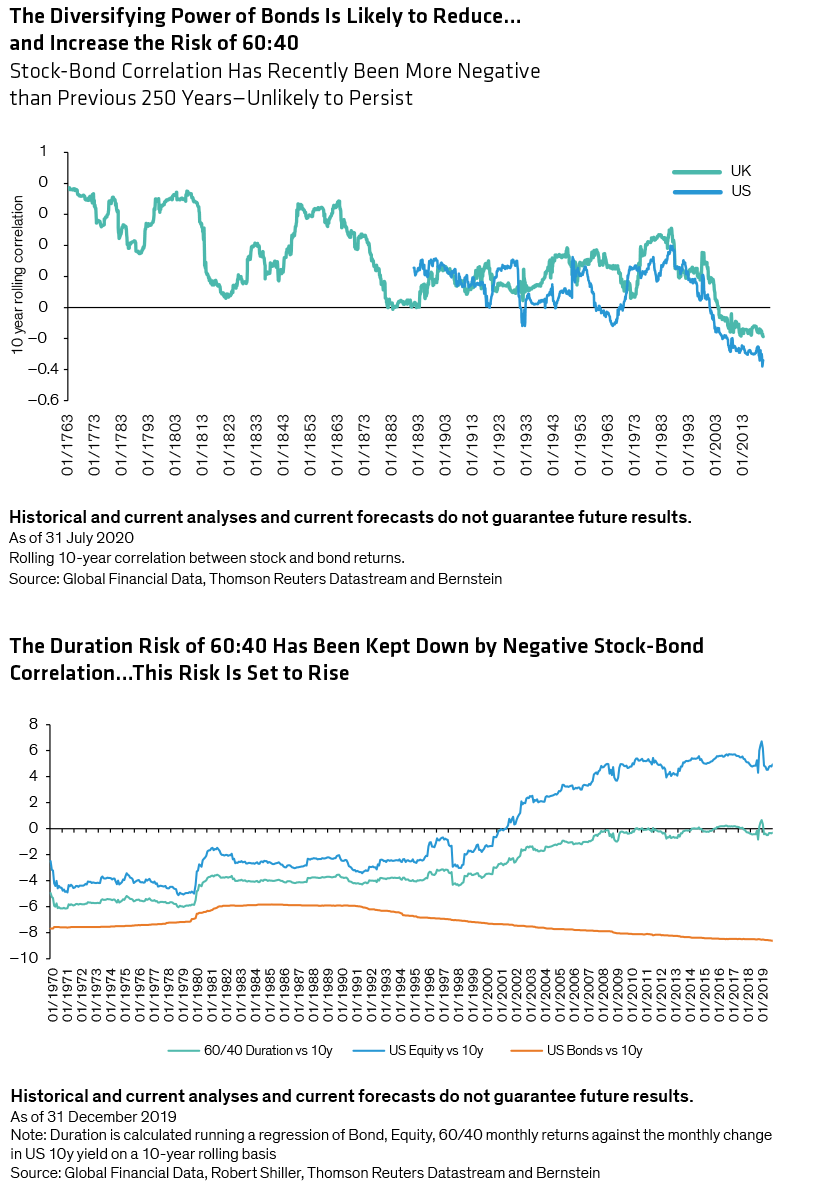Pensions regulators rightly stress the primacy of value for money and good governance in defined contribution pensions. New proposals advocate that DC fiduciaries should adopt a uniform framework for analysing VFM based on three elements: charges and transaction costs, customer service, and investment performance.
Everyone wants VFM — but what represents value, and for whom? Different pension plans have different members with varying needs, and different sponsors with varying levels of resources and willingness to finance high-quality pension provision.
In recent decades, the environment for simple, passive, equity/bond portfolios has been exceptionally benign compared with long-run capital markets history
Pension plans whose fiduciaries seek high-quality investment solutions with good governance and customisation capabilities will perceive value differently than decision-makers seeking a basic, low-cost packaged solution.
It is important to recognise that there is a spectrum of client needs, and that VFM must be interpreted relative to a pension plan’s positioning on that spectrum. But where investment quality is a priority, a trend back towards static asset allocations should be a cause for concern.
Strong performance by global equity and bond markets in recent years has led many fiduciaries to question the benefits of wider diversification. These two asset classes can be implemented cheaply and easily through passive vehicles and have delivered strong, net-of-fee returns to DC members.
Sadly, no one can buy past performance. To analyse the role of investment strategies in a DC pension plan default, we firmly believe that fiduciaries need to adopt a forward-looking mindset. This involves considering future performance and risk scenarios and understanding how their choice of default is likely to affect members’ savings over the course of their remaining career lifetimes.
Don’t bank on negative correlation
In recent decades, the environment for simple, passive, equity/bond portfolios has been exceptionally benign compared with long-run capital markets history. Not only have returns for these two asset classes been very high, but they have also been negatively correlated to an abnormally high extent.
That means fiduciaries have enjoyed exceptional returns with low risk from simple and cheap investment solutions. But as we show in the displays below, this outcome is highly unusual and is likely to change in the coming years.

As we can see, the risk-reward profiles for equities and bonds have altered drastically over time as investment regimes changed. And with both equity and bond markets richly valued relative to history, their return-risk trade-off is set to deteriorate as we enter the post Covid-19 era. We believe additional diversifying strategies will be necessary to manage risks and enhance returns.
For 40 years, simple equity/bond portfolios (such as a familiar 60:40 mix) have outpaced inflation. But in future, the returns from a standard 60:40 portfolio are set to decline, while the policy response to Covid-19 makes higher inflation much more likely.
In return terms, our forecasts suggest an annualised return of just 3.4 per cent over a 10-year horizon, which may struggle to match inflation at potentially more than 3 per cent a year.
In risk terms, the outlook for this equity/bond strategy is also concerning. Historically, stocks and bonds have not always been inversely correlated.

Here, too, the power of mean reversion is a serious threat to simple, low-cost equity/bond mixes. A change in investment regime will weaken the diversifying power of bonds and expose investors in longer-duration assets to higher levels of volatility.
Plainly, risk management is set to become more important in future, and this will be harder to achieve without more extensive diversification — particularly as government bonds now offer negative yields after the effects of provider fees are taken into account. So we think fiduciaries need to adopt more advanced DC solutions that can harness the diversifying power of a wider variety of market opportunities and strategies.
Can trustees handle multiple asset classes?
Traditional lifestyle approaches are ill-adapted to more sophisticated and diversified strategies. Even the larger and well-resourced pension plans may struggle to manage the type of strategies that can help address the new environment of higher volatility and lower returns for traditional asset classes.
These strategies are likely to include illiquid investments in private market debt and private equity, as well as direct physical investment in real estate and infrastructure. Target-date funds have the investment structure to enable these investments and are managed by professionals with the expertise to understand, monitor and manage them. Trustee groups may not.
Fiduciaries therefore need to consider their own particular circumstances and resources as they decide how to achieve value for their members’ investments going forward.
VFM does not necessarily mean the lowest sticker price or strongest recent investment performance. In assessing value, fiduciaries should consider the complete range of costs and benefits associated with an investment solution.
And they should understand the likely risk and reward scenarios facing their members over the course of their career lifetimes. Only then can fiduciaries determine the features they really value and what approach represents the best solution.
David Hutchins is head of multi-asset solutions in Emea at AllianceBernstein






















